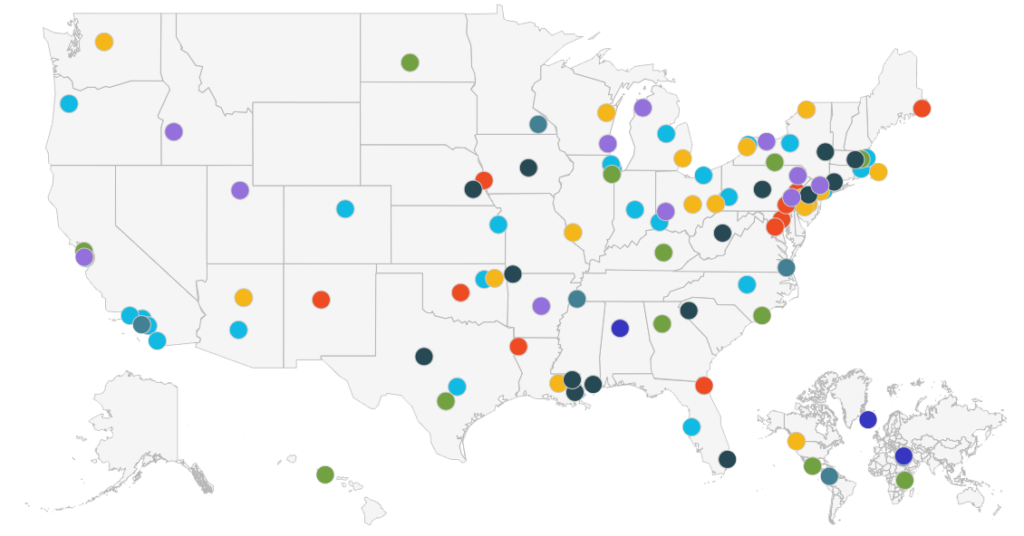Global Partnerships
STEM Ecosystems
Connecting Communities, Fueling Growth
Based on trusted local partnerships, STEM Ecosystems expand resources, funding, and connections across sectors, breaking down silos in education and workforce development like never before.
Partners include schools, afterschool and summer programs, colleges and universities, businesses, government, community-based organizations and more to career connected learning for young people, close opportunity gaps, stimulate economic growth, and address talent shortages.

The Power of We: Our Impact
42M
PreK-12 Children
900K
PreK-12 Teachers & Informal Educators
4.6K
Philanthropic Business & Industry Partners
Where We Are
Since its inception in 2015, the STEM Ecosystems initiative has grown to encompass almost 120 Ecosystems across the United States and internationally.
A first-of-its-kind global collaboration Ecosystems collectively serve millions, preparing all learners for emerging opportunities.


Driving Measurable Gains in Communities
STEM Ecosystems have been credited with driving measurable and meaningful gains for students and families in urban and rural areas across 43 states, as well as in Mexico, Canada, Colombia, Kenya, Iceland and Israel. Ecosystems have played a key role in partnering with local, regional and national employers, often making a key difference in companies’ plans, including talent identification and development.
Design Principles of Thriving Ecosystems
STEM Ecosystems represent a transformative approach to STEM education and workforce development, bringing together diverse partners to create comprehensive learning opportunities for all. Five key pillars form the foundation of our work, including: Partnerships, Systems, Teaching & Learning, Data Management, and Workforce.
These pillars, informed by years of research and practical experience, guide the strategic direction, shape the collective impact, and serve as a roadmap for our efforts to transform STEM education and prepare learners for the challenges and opportunities of tomorrow.

